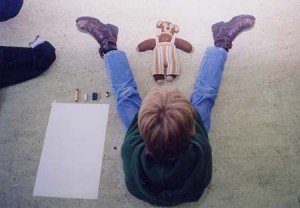
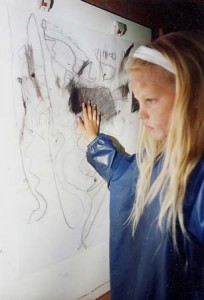
A 9 year old primary school girl is making a large drawing partially with her eyes closed. She opens her eyes at two thirds through the drawing process, after which she can continue drawing intuitive shapes with her eyes open.
Head, heart and hands form the triangle…….
which is the base for the child’s emotional, spiritual and cognitive growth.
This workbook contains descriptions of 22 exercises in visual expression for the promotion of the integration of emotional, social and cognitive intelligence.
Almost all exercises are characterised by the simultaneous or alternate drawing or claying with both hands.
This stimulates the exchange between de left and right hand sides of the brain. This is an important element of the method through which a harmonisation in the development of the client (the child, young adult or adult) can take place.
Evidence Based method in the Handbook Art Therapy (Handboek Beeldende Therapie) 2009
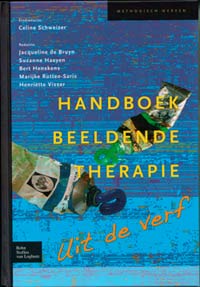
This expressive method, with art not as its aim but as a means, is effective both in an educational/creative way and in a curative therapeutic/creative way.
The method the Timeless Hour is applied professionally:
- In Higher Vocational Education such as Art Therapy and Creative Therapy in the Netherlands.
- Also in private therapeutic practices of these trained therapists.
Through teachers of these training courses together with Celine Schweizer, who did the final editing , the Handboek Beeldende Therapie with as its title ‘uit de verf’ (Handbook Art Therapy) was published in 2009 by Bohn Stafleu en van Loghum/Houten ISBN978 90 313 5253 1.
- By art and creative therapists throughout the Netherlands who have received training from Michiel Czn. Dhont in studio Molenpad Workplace in Amsterdam. Twenty five therapists/teachers of this training course have come together in the working group ‘the Timeless Hour’ and under Michiel’s supervision have carried out many projects upon request in the Netherlands.
- At the Psychology Faculty of the University of Amsterdam a former student of mine teaches seminars at RINO (Training Institute for Mental Health Care) about the method ‘the Timeless Hour’.
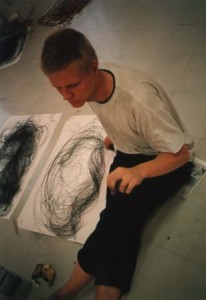
- By coaches – therapists-pedagogues in the ASTRA and former Boddaert Foundation and coaching of asylum seekers, the Foundation for Child and Justice in Amsterdam, in health care and coaching of the disabled, for instance the coaching of autistic children.
- In primary education by group teachers and remedial teachers and to a lesser degree in secondary education.
- At the Erasmus Art Academy in Rotterdam in free drawing and drawing after a model.
- Private art training courses and alternative therapies.
- By Training Artists & Co.,( Opleiding Kunstenaars&Co) in Amsterdam where artists are trained to become guest teachers in primary education. This may lead to permanent positions.
- Frequently in the coaching of autistic children, adolescents and adults.
- By some Dutch therapists and artist working abroad with the method of the Timeless Hour.
The workbook is accompanied by an introduction and instruction film, the production of which was made possible through a subsidy from the Dutch Children Stamps Fund (Stichting Kinderpostzegels Nederland).
This DVD can now also be found in two parts on YouTube. A third film can also be viewed there. See under PRESENTATION – You Tube in the menu. ´t Tijdloze Uur (the Timeless hour) was published in the year 2000 by Lambo publishers in Arnhem. A revised version of the book is now available (see under ORDER in the menu).
Michiel Czn. Dhont has developed a unique method which works out of movement and intuition through individual and communal drawing and claying exercises. Through the exchange of basic sensory emotional experiences communication and social interaction develops. Through both group and individual exercises and therapies ….
Through the exchange of basic sensory emotional experiences communication and interaction is created. By carrying out both group and individual exercises in therapies, the child’s body experience is brought into balance. This can lead to an increase in self confidence, reduction of stress, increase in creativity and improvement in cognitive learning ability. The Timeless Hour is a source of inspiration for concrete therapeutic applications in various therapeutic training courses and/or situations in daily practice in jobs within health care institutions or for therapists who are working in their private practice with children and adults.
The exercises in this book enhance the individual and group feeling and promote the integration of cognitive, emotional and social intelligence.
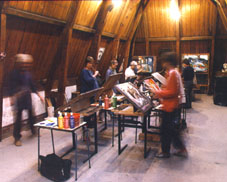
In addition the exercises within group therapy offer countless opportunities to enhance the mutual trust among children. This because of the playful and social character of various exercises. This also applies to adults within group therapies. The therapist can choose to do an exercise together with the child. This is especially the case with exercises which can easily be carried out in pairs. Stress is a factor which disturbs and undermines the development of the nervous system/brain and which to a great degree can block the development of the personality. The behaviour of a child under stress is not always easily recognisable for a therapist. It is especially difficult in the early stages. Stress frustrates the development of the relationship based on mutual trust between the child and the adults, such as parents and other educators. Children to a greater or lesser degree exhibit stress caused by media and a full calendar. Based on neurological scientific research it is stated that the brain can continue growing until around the 24th year of a young adult’s life.
Research at Higher Vocational Education institutes has shown that the exercises appear to be a good diagnostic gauge for determining which therapeutic treatment might be the best. The exercises were combined into effective modules. As a result the method the Timeless Hour is listed in the Handbook Expressive Therapy.
Read more about this under the heading ´Research – Cases´ carried out by Creative Therapist Naqiba Bergenfurt from Amsterdam. At the request of the school governors of a primary school in Amsterdam – North she assessed six children with learning and behavioural problems to determine whether they could stay at the school or would have to leave the school to attend day therapy. This assessment lead to a clear diagnostic insight.
Through exertion to release and then to relaxation!
The damage caused by stress to a lesser or greater degree affects the growth of a child into a fully grown adult human being.
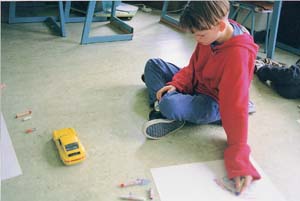
The exercises in this book make it possible to reduce the stress in the child’s behaviour through release. This in itself will have a positive effect on the development of the child as a whole and implicitly on its cognitive learning ability. The method in the Timeless Hour is the result of Michiel Dhont’s 42 years’ teaching experience with both children and adults. Students trained at the Studio Molenpad Workplace in Amsterdam and at foreign institutes have also contributed. The approach has yielded positive results with both children and adults. The 22 exercises being offered can be carried out both individually and by two or more children.
The method in the book can be applied within various fields of activity for children as well as for adults. ‘t Tijdloze Uur (the original Dutch version of the Timeless hour), was published in the Netherlands in the year 2000 as a workbook with an accompanying video. (An updated version is now available). The text was then translated into English. In addition to an English Internet edition, a German Internet Edition will appear in the near future. Various contacts have also been made to arrive at editions in French, German, Spanish, Finnish and Hebrew (see SPONSORING LETTER IN THE Menu).
The United Nations / U.N. through the Committee of the World Health Organization has, on the recommendation of the N.I.G.Z. (Netherlands Institute for Health and Care) motivated its selection of the Timeless hour as follows:
1. A simple and immediately didactically applicable workbook for the group teacher and the children in a class for the creation of an atmosphere of well being for children and the group teacher in primary and secondary education. The exercises can make a positive contribution towards the group atmosphere in the learning process as a whole and the development of Cognitive Intelligence specifically.
2. Promotion and support of the development of the child’s personal identity by giving attention to the development of Emotional Intelligence.

3. Promotion of the development of the child’s Social Intelligence within a group process in general and also as regards the behaviour within a multicultural society.
4. The book’s universal character and the fact that in can be applied in many cultures around the world, except in dictatorially governed states.
5. These expressive exercises stimulate the ability to concentrate and to visualise.
